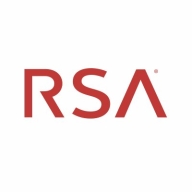

RSA SecurID and Microsoft Entra ID compete in the security solutions category. Based on user reviews, RSA SecurID excels in support and ease of deployment, while Microsoft Entra ID often edges out in overall features and ROI.
What features are offered by RSA SecurID in comparison to Microsoft Entra ID?Users highlight the valuable two-factor authentication, robust security integrations, and advanced threat detection of RSA SecurID. Microsoft Entra ID is praised for its comprehensive identity management, seamless integration with Microsoft services, and multi-factor authentication. Entra ID's features generally appeal more to users due to their broader scope and versatility.
What areas of improvement can be found in RSA SecurID in comparison to Microsoft Entra ID?User reviews suggest RSA SecurID could improve its mobile support, ease of use for non-technical users, and user interface. Microsoft Entra ID users seek better multi-cloud support, more efficient troubleshooting resources, and enhanced third-party integrations. Microsoft Entra ID's issues are more aligned with evolving tech trends.
How is the ease of deployment and customer service of RSA SecurID in comparison to Microsoft Entra ID?RSA SecurID is noted for smoother deployment, particularly in large enterprises, and has robust customer service. Microsoft Entra ID faces fewer deployment hurdles within Microsoft ecosystems but can be challenging in multi-vendor environments. Its customer service receives mixed reviews. RSA SecurID is favored for deployment ease and support responsiveness.
What setup costs and ROI can be seen with RSA SecurID in comparison to Microsoft Entra ID?RSA SecurID has a higher setup cost but provides a high ROI through enhanced security. Microsoft Entra ID offers competitive pricing, especially for existing Microsoft customers, and demonstrates a substantial ROI by leveraging Microsoft’s ecosystem. Users feel that despite the higher initial cost, RSA SecurID’s long-term security benefits justify the investment.
| Product | Market Share (%) |
|---|---|
| Microsoft Entra ID | 9.6% |
| RSA SecurID | 4.4% |
| Other | 86.0% |

| Company Size | Count |
|---|---|
| Small Business | 85 |
| Midsize Enterprise | 38 |
| Large Enterprise | 155 |
| Company Size | Count |
|---|---|
| Small Business | 5 |
| Large Enterprise | 4 |
Microsoft Entra ID is an advanced identity and access management service offering seamless single sign-on, multifactor authentication, and centralized user access across applications, enhancing security and efficiency for organizations transitioning to cloud-based environments.
Recognized for its centralized management, Microsoft Entra ID significantly boosts organizational security by integrating features such as conditional access and identity protection. It supports a wide array of applications, facilitating a secure transition from on-premises to scalable cloud environments. By adopting robust security measures and flexible identity management, organizations can streamline operations and ensure consistent user experiences. However, challenges like confusing licensing costs, outdated documentation, and limited integration with non-Microsoft applications persist. Enhancements in technical support, interface design, and more granular permissions are needed to address these issues effectively.
What are the key features of Microsoft Entra ID?In healthcare, Microsoft Entra ID facilitates secure patient record access and compliance with industry regulations. Financial institutions rely on it for robust security measures in safeguarding client data. In the education sector, it streamlines access to online resources for students and faculty. Global enterprises benefit from its ability to manage complex identity frameworks across multiple regions, ensuring reliable security amidst increasing cyber threats.
The RSA SecurID Suite combines the separate disciplines of access management and authentication with identity governance and user lifecycle management into one comprehensive suite. It goes way beyond the capabilities of traditional identity and access management systems by using risk analytics to provide identity and access assurance. This helps organizations solve two fundamental challenges:
We monitor all Authentication Systems reviews to prevent fraudulent reviews and keep review quality high. We do not post reviews by company employees or direct competitors. We validate each review for authenticity via cross-reference with LinkedIn, and personal follow-up with the reviewer when necessary.